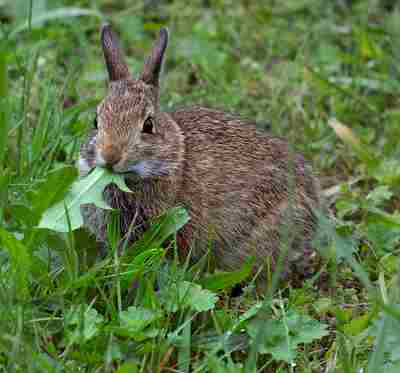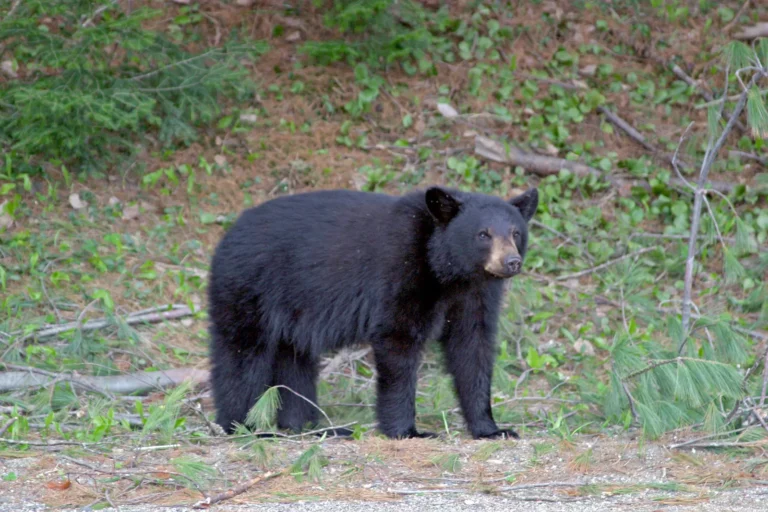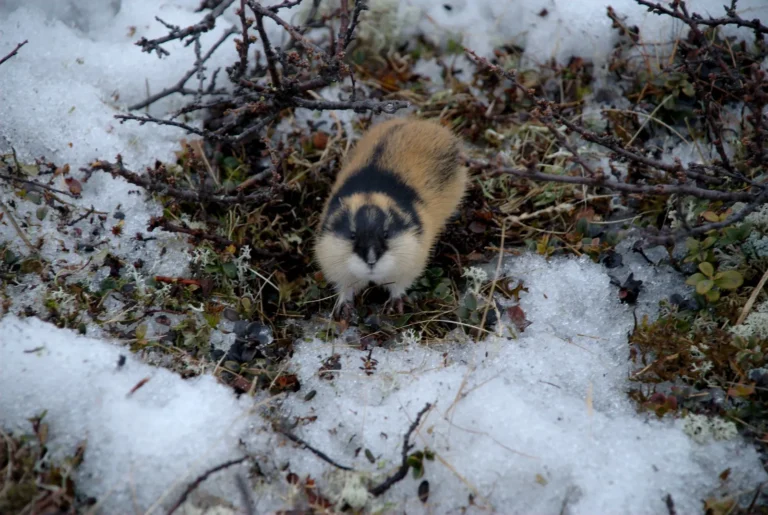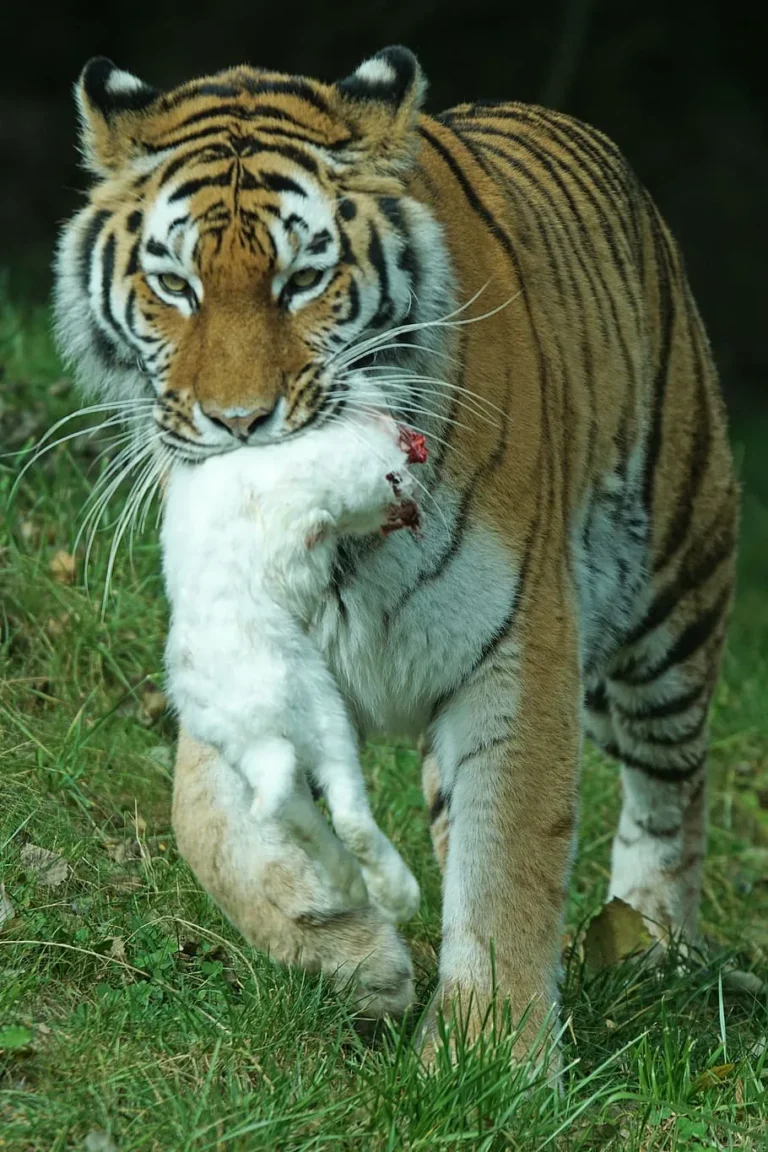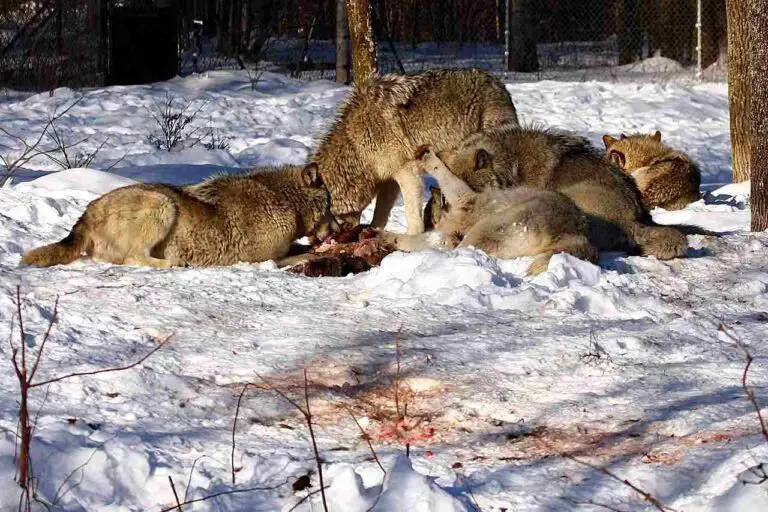Are Parrots Omnivores? Analyzing the Feeding Behavior of Parrots
Parrots are classified as omnivores due to their diverse diet. While they primarily consume seeds, nuts, berries, fruits, flowers, and foliage, they also have the ability to eat insects, worms, and other small animals. This non-exclusive plant-dominated diet allows parrots to adapt to various food sources and environments.
Their opportunistic foraging habit further supports their omnivorous classification, as they take advantage of available food resources. Parrots exhibit high dietary adaptability, allowing them to thrive in different ecosystems. This flexibility in feeding behavior is essential for their survival and contributes to their classification as omnivores.
Why Parrots are Classified as Omnivores
1). Non-Exclusive Plant-Dominated Diet
Parrots are classified as omnivores due to their non-exclusive plant-dominated diet. While they primarily consume plant matter, they are not limited to it. This diverse feeding behavior is one of the reasons why parrots are considered omnivores.
Parrots have a varied diet that includes fruits, seeds, nuts, flowers, and even nectar. They have a strong beak that allows them to crack open hard shells and extract the nutritious contents inside. Additionally, parrots may also consume insects, small invertebrates, and even small vertebrates like lizards or baby birds. This opportunistic foraging habit enables them to adapt to different food sources depending on availability.
The high dietary adaptability of parrots is another characteristic that supports their classification as omnivores. They can adjust their feeding behavior based on the environment and the resources available. For example, in times of scarcity, parrots may rely more heavily on plant matter, while in areas with abundant food sources, they may incorporate more animal protein into their diet.
Parrots’ ability to consume a wide range of food sources is not only beneficial for their survival but also plays a crucial role in the ecosystem. By consuming fruits and seeds, parrots contribute to seed dispersal, helping to regenerate plant populations and maintain biodiversity. They also play a role in controlling plant and invertebrate populations, preventing overgrowth and maintaining ecological balance. Furthermore, parrots contribute to species richness by interacting with various plant species and facilitating pollination.
2). Opportunistic Foraging Habit
Parrots’ opportunistic foraging habit is another reason why they are classified as omnivores. This means that they have the ability to adapt their feeding behavior based on the availability of food sources. Parrots are not limited to a specific type of food and can consume a wide range of options.
In their natural habitat, parrots have access to various food sources, including fruits, seeds, nuts, flowers, and nectar. They have a strong beak that allows them to crack open hard shells and extract the nutritious contents inside. Additionally, parrots may also consume insects, small invertebrates, and even small vertebrates like lizards or baby birds.
The opportunistic foraging behavior of parrots enables them to survive in different environments and adapt to changing conditions. When certain food sources are scarce, parrots can switch to alternative options to meet their nutritional needs. This flexibility in their feeding habits is a key characteristic of omnivores.
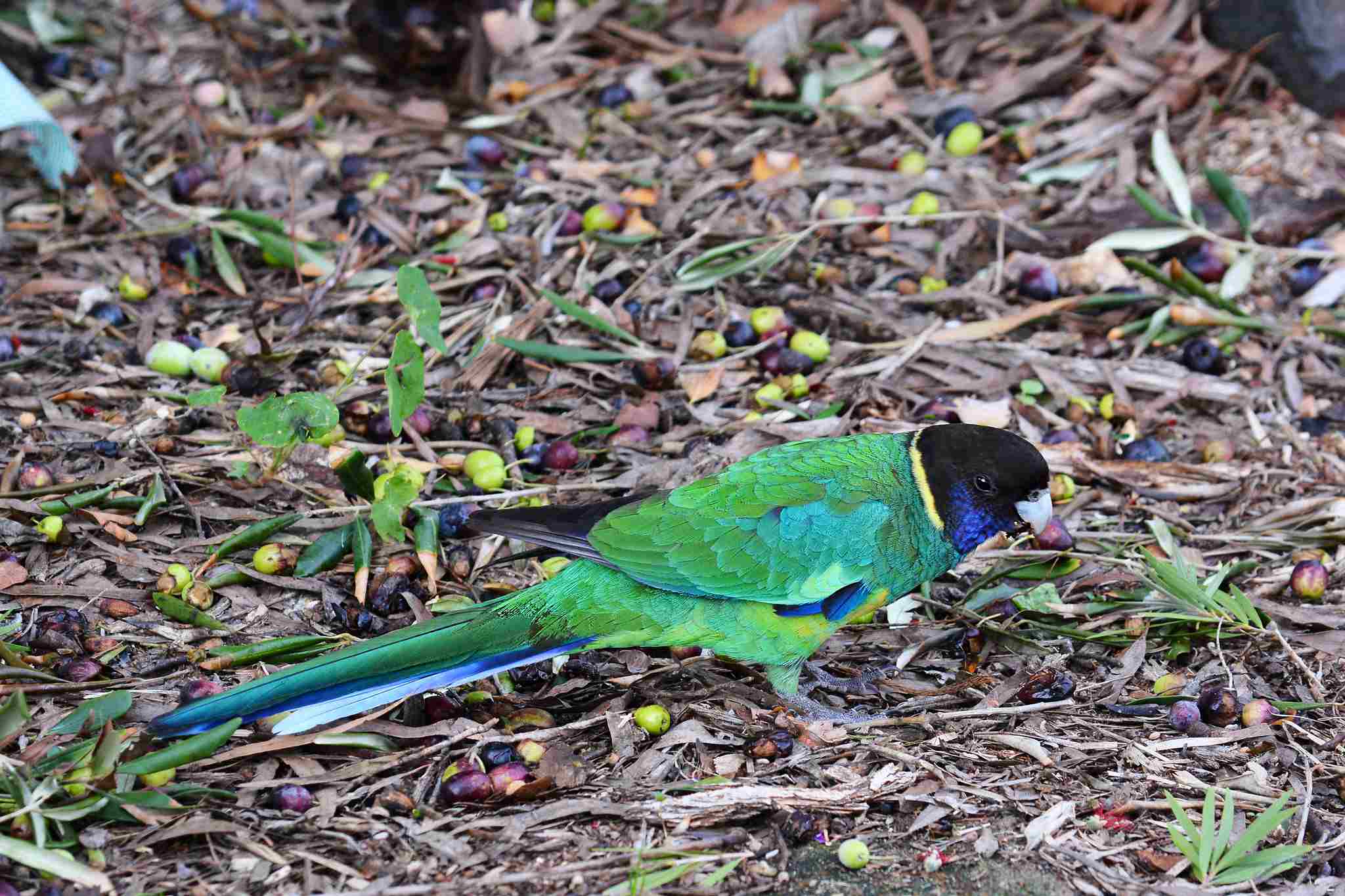
3). High Dietary Adaptability
Parrots’ high dietary adaptability is another key reason why they are classified as omnivores. This adaptability allows them to thrive in various environments and consume a wide range of food sources.
In their natural habitat, parrots have access to a diverse array of foods, including fruits, seeds, nuts, flowers, and nectar. Their strong beaks enable them to crack open hard shells and extract the nutritious contents inside. Additionally, parrots may also supplement their diet with insects, small invertebrates, and even small vertebrates like lizards or baby birds.
This ability to adapt their feeding behavior based on the availability of food sources is crucial for parrots’ survival. When certain food sources become scarce, parrots can easily switch to alternative options to meet their nutritional needs. This flexibility in their feeding habits is a defining characteristic of omnivores.
Parrots’ high dietary adaptability also allows them to thrive in captivity. When kept as pets, parrots can be provided with a balanced diet that includes a variety of fruits, vegetables, seeds, and pellets. This ensures that they receive all the necessary nutrients for their well-being.
Are Parrots Herbivores?
Parrots are not classified as herbivores, although their diet is predominantly plant-based. While they primarily consume fruits, seeds, nuts, flowers, and nectar, they also have the ability to supplement their diet with animal biomass. This includes insects and worms, which they opportunistically feed on to meet their nutritional needs. This opportunistic foraging behavior allows parrots to survive in their natural habitat by adapting to the availability of food sources.
It is important to note that while parrots are often portrayed as herbivores, there are other bird species that better fit this description. For example, some species of swans, geese, and ducks have a predominantly herbivorous diet. Additionally, certain species of parrots, such as cockatoos, have an almost exclusive herbivorous diet.
Parrots’ ability to consume both plant and animal matter is a key characteristic of their omnivorous nature. This dietary flexibility is essential for their survival, as it allows them to adapt to changes in their environment and food availability. By incorporating both plant and animal biomass into their diet, parrots can ensure they receive a balanced range of nutrients.
In captivity, parrots can be provided with a well-rounded diet that includes a variety of fruits, vegetables, seeds, and pellets. This ensures that they receive all the necessary nutrients for their overall health and well-being. The high dietary adaptability of parrots also allows them to thrive in captivity, as they can easily adjust to the food sources provided to them.
Are Parrots Carnivores?
While parrots are not prominently or solely predatory like raptors, they do have the ability to feed on other animals. However, it is important to note that parrots are not obligate carnivores, meaning they do not rely exclusively on animal biomass for their diet. Unlike vultures, parrots do not scavenge on carcasses as their primary source of food.
Parrots are classified as omnivores because they have a diverse diet that includes both plant and animal matter. While their diet is predominantly plant-based, they do supplement it with animal protein when necessary. This opportunistic foraging behavior allows parrots to adapt to the availability of food sources in their natural habitat.
In the wild, parrots primarily consume fruits, seeds, nuts, flowers, and nectar. However, they also have the ability to hunt and consume insects and worms. This ability to incorporate both plant and animal matter into their diet is a key characteristic of their omnivorous nature.
In captivity, parrots can be provided with a well-rounded diet that includes a variety of fruits, vegetables, seeds, and pellets. This ensures that they receive all the necessary nutrients for their overall health and well-being. While animal protein is not the main component of their diet, it can be included in the form of insects or small amounts of lean meat.
Therefore, while parrots have the ability to consume other animals, they are not classified as carnivores. Their diet is diverse and includes both plant and animal matter, making them omnivorous. This dietary flexibility is essential for their survival and allows them to adapt to changes in their environment and food availability.
How Does a Parrot Eat?
Parrots have a unique way of eating, using their beaks and claws to forage for food. They have a diverse diet that includes various plant parts such as foliage, seeds, and fruits. When it comes to cracking nuts, parrots are skilled at using their beaks to break open the tough shells and access the nutritious contents inside.
Parrots also have the ability to hunt for insects. They can catch bugs either by using their claws to grab them or by pecking them to death with their beaks. Parrots are adept at finding insects by clawing through dirt and can even detect flying insects with their strong sense of smell.
The way parrots eat can vary depending on their size and beak strength. Smaller parrot species like budgies, cockatiels, and canaries have smaller beaks that are perfectly suited for cracking seeds and delicately picking grain from grasses. On the other hand, larger parrots and macaws have more powerful beaks that are strong enough to rip through thick fruit husks and crack nutshells.
Are Parrots Birds of Prey?
Parrots are not classified as birds of prey. Unlike true birds of prey, such as eagles and hawks, parrots do not rely solely on other animals for their energy and nutrient needs. They are not obligate carnivores and do not actively hunt for prey.
Birds of prey have specific adaptive features that allow them to excel in hunting and capturing their prey. These features include exceptional eyesight, sharp talons, a wide wingspan, and a specialized beak shape. Parrots, on the other hand, lack these specific adaptations that are characteristic of birds of prey.
Parrots are primarily herbivorous, with a diet that consists mainly of plant material such as fruits, seeds, nuts, and foliage. They have a non-exclusive plant-dominated diet, which means they consume a variety of plant parts from different sources. This diverse diet reflects their opportunistic foraging habit, as they are able to adapt to different food sources depending on availability.
While parrots do not possess the characteristics of birds of prey, they can still fall prey to them. Predatory birds like eagles and ferruginous hawks are known to prey on parrots in certain regions. Parrots, with their vibrant colors and loud calls, can attract the attention of these raptors, making them vulnerable to predation.
Why are Parrots Important to the Ecosystem?
Parrots play a crucial role in the ecosystem due to their importance in seed dispersal. As parrots consume fruits and seeds, they inadvertently spread the seeds through their droppings, allowing for the regeneration and dispersal of plant species. This process helps maintain and enhance the biodiversity of ecosystems.
Additionally, parrots contribute to the control of plant and small invertebrate populations. By feeding on certain plants and insects, parrots help regulate their numbers, preventing overpopulation and maintaining a balanced ecosystem.
Furthermore, parrots contribute to species richness by interacting with various plant species and creating opportunities for pollination and seed dispersal. Their presence enhances the diversity of plant and animal life in their habitats.
Lastly, parrots facilitate energy transfer in the food chain. As they consume plant material and insects, they become a source of food for predators, transferring energy from lower trophic levels to higher ones.
1). Role in Seed Dispersal
Parrots play a crucial role in the ecosystem through their significant contribution to seed dispersal. This process is vital for the regeneration and dispersal of plant species, ultimately enhancing the biodiversity of ecosystems. As parrots consume fruits and seeds, they inadvertently spread the seeds through their droppings, allowing them to be transported to new areas and facilitating the growth of diverse plant communities.
By consuming a variety of fruits and seeds, parrots interact with different plant species, ensuring the pollination and dispersal of a wide range of plants. This interaction promotes species richness and helps maintain the balance of plant populations within ecosystems. Additionally, parrots often feed on fruits that are not readily consumed by other animals, making them important agents for the dispersal of these specific plant species.
Furthermore, parrots contribute to the establishment of new plant populations by dispersing seeds over long distances. This dispersal mechanism helps plants colonize new areas, especially in fragmented landscapes where natural seed dispersal agents may be limited. Parrots’ ability to fly long distances and their wide foraging range make them effective seed dispersers, contributing to the expansion and survival of plant species.
2). Control of Plant and Invertebrate Populations
Parrots play a crucial role in controlling plant and invertebrate populations within ecosystems. Their feeding behavior and foraging habits contribute to the regulation of these populations, ensuring the overall health and balance of the ecosystem.
One way parrots help control plant populations is through their consumption of fruits and seeds. As they feed on a variety of plant species, they help prevent the overgrowth of certain plants by reducing the number of seeds available for germination. This helps maintain a diverse plant community and prevents the dominance of any particular species.
In addition to controlling plant populations, parrots also play a role in regulating invertebrate populations. Many parrot species feed on insects, larvae, and other small invertebrates. By consuming these organisms, parrots help keep their populations in check, preventing outbreaks or infestations that could have detrimental effects on plants and other animals.
Furthermore, parrots’ feeding behavior can also indirectly impact plant and invertebrate populations. As they move from one feeding location to another, parrots disperse seeds and invertebrates through their droppings. This dispersal mechanism helps plants colonize new areas and promotes the distribution of invertebrates, contributing to the overall biodiversity of the ecosystem.
3). Contribution to Species Richness
Parrots make a significant contribution to species richness and biodiversity within ecosystems. Their presence and feeding behavior play a crucial role in maintaining a diverse and thriving ecosystem.
One way parrots contribute to species richness is through their interaction with plants. As parrots feed on a variety of fruits and seeds, they help disperse seeds to different areas through their droppings. This dispersal mechanism allows plants to colonize new habitats and expand their range, contributing to the overall diversity of plant species within the ecosystem.
In addition to their role in plant dispersal, parrots also contribute to species richness by providing a food source for other animals. Predators such as snakes, mammals, and birds of prey rely on parrots as a part of their diet. By supporting the populations of these predators, parrots indirectly contribute to the overall biodiversity of the ecosystem.
Furthermore, parrots themselves are a diverse group of species, with different colors, sizes, and behaviors. This diversity adds to the overall species richness within the ecosystem. Each parrot species has its own ecological niche and plays a unique role in the ecosystem, further enhancing the biodiversity and ecological balance.
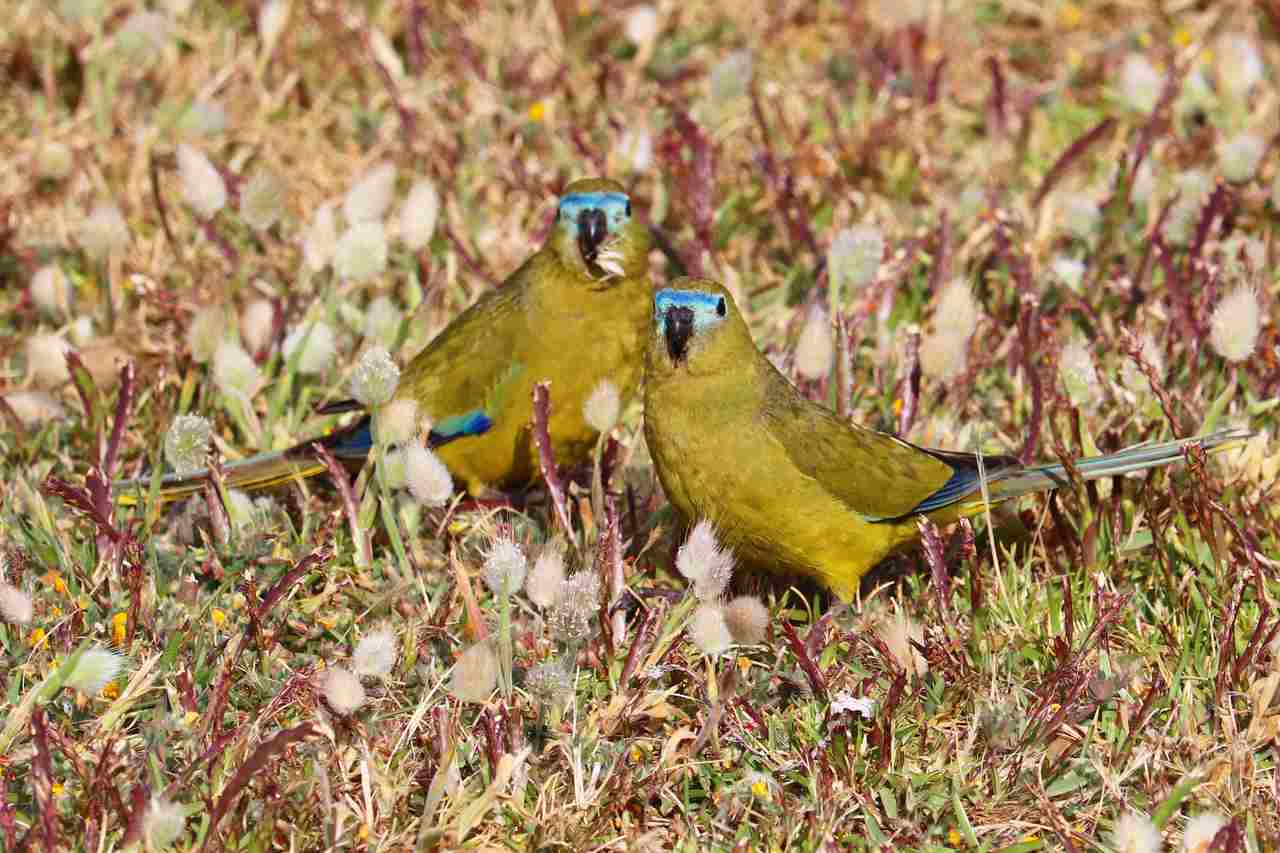
4). Facilitation of Energy Transfer in the Food Chain
Parrots play a crucial role in facilitating the transfer of energy within the food chain, making them an essential component of the ecosystem.
One reason why parrots are important in this regard is their feeding behavior. As omnivores, parrots consume a variety of foods, including fruits, seeds, nuts, and even insects. By consuming these different food sources, parrots act as intermediaries in the food chain, transferring energy from one trophic level to another. They convert the energy stored in plants and insects into their own biomass, which can then be consumed by predators or decomposers.
Moreover, parrots are known for their ability to crack open hard nuts and seeds with their strong beaks. This unique feeding behavior allows them to access food sources that may be inaccessible to other animals. By doing so, parrots contribute to the availability of food for other species in the ecosystem, ensuring a continuous flow of energy through the food chain.
In addition to their role as energy facilitators, parrots also contribute to nutrient cycling within the ecosystem. When parrots consume fruits and seeds, they digest the edible parts and excrete the undigested seeds in their droppings. These droppings contain valuable nutrients that can enrich the soil and promote the growth of plants. This nutrient cycling process helps to maintain the overall health and productivity of the ecosystem.
Conclusion
* Parrots are classified as omnivores due to their non-exclusive plant-dominated diet, opportunistic foraging habit, and high dietary adaptability. They consume a variety of foods, including fruits, seeds, nuts, and insects, making them versatile feeders in the ecosystem.
* While parrots are not herbivores or carnivores exclusively, their omnivorous diet allows them to obtain nutrients from both plant and animal sources. This flexibility in feeding behavior contributes to their survival and adaptability in different environments.
* Parrots play a crucial role in the ecosystem by facilitating the transfer of energy within the food chain. Their unique feeding behavior, such as cracking open hard nuts and seeds, allows them to access food sources that may be inaccessible to other animals. They also contribute to nutrient cycling through their droppings, enriching the soil and promoting plant growth.
FAQs
1. Are Parrots Vegetarian?
Parrots are not solely vegetarian, but they do have a primarily plant-based diet. While they do consume a variety of fruits, vegetables, nuts, and seeds, they also incorporate some animal protein into their diet. This can include insects, small reptiles, and even small mammals. Parrots are considered omnivores because they have the ability to digest and utilize both plant and animal matter. However, the majority of their diet consists of plant-based foods.
This balanced diet provides them with the necessary nutrients and energy to thrive in their natural habitats. So, while parrots are not strictly vegetarian, their diet is predominantly plant-focused. This allows them to enjoy a wide range of foods and ensures they receive the necessary nutrients for their overall health and well-being.
2. Are Parrots Lactose Intolerant?
Yes, to a degree, parrots are lactose intolerant, but not extremely so. They do not efficiently digest several dairy products, including cow milk. Consuming lactose can cause diarrhea and stomach upset in parrots.
Parrots, like many other animals, lack the enzyme lactase, which is necessary to break down lactose, the sugar found in milk. Without lactase, lactose remains undigested in their digestive system, leading to digestive issues.
While parrots may not be able to tolerate cow milk, it’s important to note that there are alternative options available for them. Some parrots can tolerate small amounts of lactose-free dairy products, such as lactose-free milk or yogurt. However, it’s crucial to introduce these alternatives gradually and monitor the parrot’s response to ensure they can tolerate them without any adverse effects.
In general, it is best to avoid feeding parrots dairy products altogether and focus on providing them with a balanced diet consisting of fruits, vegetables, nuts, and seeds. This ensures they receive the necessary nutrients without the risk of digestive discomfort.
3. How do Parrots Eat with Their Beaks?
Parrots have a unique way of eating with their beaks. Their beaks are specially adapted to perform a variety of tasks, allowing them to crack nuts, rip foliage, and expose the inner parts of fruits. The beak of a parrot is strong and sharp, enabling them to break open tough shells and extract the nutritious contents inside. They can also use their beaks to peel the skin off fruits and vegetables, revealing the softer flesh underneath.
Parrots have a dexterous tongue that helps them manipulate food within their beaks, allowing them to taste and swallow it. They can also use their beaks to hold and manipulate objects, such as toys or tools. This versatility in their beak usage is essential for parrots to obtain and consume their food in the wild. Whether it’s cracking nuts or peeling fruits, parrots have evolved to use their beaks effectively for their dietary needs.
4. Do Parrots Chew Their Food?
Parrots do not chew their food in the same way that humans do. Instead of using their teeth to grind and break down food, parrots have a unique adaptation in their digestive system. They have a muscular organ called a gizzard, which is located in their lower stomach. The gizzard acts as a grinding chamber, where food is broken down into smaller pieces.
Parrots swallow their food whole or in large chunks, and it is in the gizzard that the food is mechanically broken down before it continues through the digestive tract. This adaptation allows parrots to efficiently extract nutrients from their food, even without chewing.
5. What Seeds do Parrots Eat?
Seeds are an important part of a parrot’s nutrition and provide them with nutrients. Some of the seeds that parrots commonly eat include sunflower seeds, pumpkin seeds, sesame seeds, and flaxseeds. These seeds are rich in healthy fats, protein, and fiber, which are all important for a parrot’s overall health and well-being.
In the wild, parrots have access to a wide range of seeds from different plants and trees. This variety allows them to obtain a balanced diet and meet their nutritional needs. However, it’s important to note that not all seeds are safe for parrots to consume. Some seeds, such as apple seeds and cherry pits, contain toxins that can be harmful to parrots.
6. How Many Times does a parrot Eat?
Parrots have a unique eating pattern that differs from other animals. They typically eat multiple times throughout the day, with the number of meals varying depending on the species and individual parrot. Some parrots may eat three to four times a day, while others may eat more frequently, up to six or seven times.
This frequent feeding is necessary because parrots have a high metabolic rate and need a constant supply of energy. Additionally, parrots have a specialized digestive system that allows them to efficiently extract nutrients from their food. Overall, the number of times a parrot eats is influenced by its size, activity level, and dietary needs.
7. What is a Parrots Beak Called?
A parrot’s beak is called a “bill.” The bill is a unique feature of parrots and plays a crucial role in their daily activities. It is a strong and versatile tool that helps parrots in various ways. The beak is used for cracking open nuts and seeds, manipulating objects, climbing, and even defending themselves.
The shape and size of a parrot’s bill can vary depending on the species and their specific dietary needs. Some parrots have short, stout bills for crushing hard foods, while others have longer, curved bills for reaching into flowers or fruits.
8. How do Parrots Swallow Food?
Parrots have a unique way of swallowing food that allows them to consume a wide variety of items. When parrots eat, they use their tongues to push the food to the back of their mouths. Then, they tilt their heads back and use gravity to help the food slide down their throats. This method is called “gravity-assisted swallowing.”
It allows parrots to eat larger pieces of food without choking. Additionally, parrots have a specialized muscle called the crop, which stores food temporarily before it moves into the stomach for digestion. This efficient swallowing process enables parrots to consume their meals with ease.
9. What does a Green Parrot Eat?
Green parrots have a diverse diet that includes a variety of fruits, vegetables, nuts, seeds, and even flowers. They are known to enjoy eating leafy greens such as spinach, kale, and lettuce. Fruits like apples, grapes, and berries are also a favorite among green parrots. Additionally, they consume nuts like almonds and walnuts, which provide essential fats and nutrients.
Green parrots are opportunistic consumer and will also feed on flowers and buds. It’s important to provide a balanced diet for green parrots to ensure they receive all the necessary nutrients for their well-being.
10. What Vegetables Can Parrots Eat?
Parrots can eat a variety of vegetables that provide essential nutrients for their health. Some vegetables that are safe and beneficial for parrots include carrots, broccoli, bell peppers, sweet potatoes, and leafy greens like kale and spinach. These vegetables are rich in vitamins, minerals, and antioxidants that support the parrot’s immune system and overall well-being.
It’s important to offer a diverse range of vegetables to ensure a balanced diet for parrots. However, it’s also crucial to avoid feeding them toxic vegetables like onions, garlic, and avocados, as these can be harmful to their health.
11. Are Parrots Related to Eagles?
Yes, parrots and eagles are both birds, but they are not closely related. Parrots belong to the genus Psittacidae, while eagles belong to the genus Aquila. Despite being part of the same class, Aves, parrots and eagles are in different families and have distinct characteristics.
Parrots are known for their vibrant plumage, ability to mimic sounds, and strong beaks. They are primarily found in tropical and subtropical regions, and their diet consists mainly of fruits, seeds, nuts, and vegetation.
On the other hand, eagles are large birds of prey known for their powerful talons and keen eyesight. They are found in various habitats worldwide and primarily feed on small mammals, birds, and fish.
12. What Bird Eats Parrots?
Parrots are not commonly preyed upon by other birds, but there are a few species that may eat them. Large raptors such as harpy eagles and some hawks have been known to prey on parrots. These birds of prey have the size and strength to capture and consume parrots.
Additionally, scavengers like vultures may feed on parrots if they come across a carcass. However, it is important to note that these instances are not very common. Parrots have evolved to be highly adaptable and have developed various defense mechanisms to avoid becoming prey.
13. Are Raptors Related to Parrots?
Yes, raptors and parrots are distantly related. While they do not share a close genetic relationship, there are some similarities between the two groups. Both raptors and parrots belong to the class Aves, but they belong to different orders. Raptors belong to the order Accipitriformes, which includes eagles, hawks, and vultures, while parrots belong to the order Psittaciformes.
Although they have different evolutionary histories, both raptors and parrots have adapted to their environments in unique ways. Raptors are known for their hunting skills and sharp beaks, while parrots are famous for their colorful feathers and ability to mimic sounds. Despite these differences, both groups play important roles in their respective ecosystems.
14. What is a Parrots Prey?
Parrots prey on a variety of small invertebrates like insects and worms. These make up an important part of their diet in the wild. Insects provide essential nutrients and protein that parrots need to thrive. Additionally, parrots may also feed on small reptiles, such as lizards, and even small mammals like mice or bats.
While parrots are primarily herbivorous, their ability to consume a diverse range of prey items showcases their adaptability and opportunistic feeding behavior.
15. What are Parrots Good for?
Parrots are good for more than just their vibrant feathers and entertaining behaviors. They play a crucial role in their ecosystems as seed dispersers. As parrots feed on fruits and nuts, parrots inadvertently spread seeds through their droppings, helping to regenerate and maintain plant populations. This makes them important contributors to forest growth and biodiversity.
Additionally, parrots have been known to form strong bonds with humans, making them popular pets and companions.
16. What is The Ecosystem of a Parrot?
The ecosystem of a parrot is primarily found in rainforests, although they can also be found in other habitats such as savannas and grasslands. Parrots play a vital role in maintaining the balance of their ecosystems. As seed dispersers, they help to regenerate and maintain plant populations by spreading seeds through their droppings.
This contributes to the growth and biodiversity of forests. Parrots also interact with other species in their ecosystem, such as pollinating flowers and providing a food source for predators.
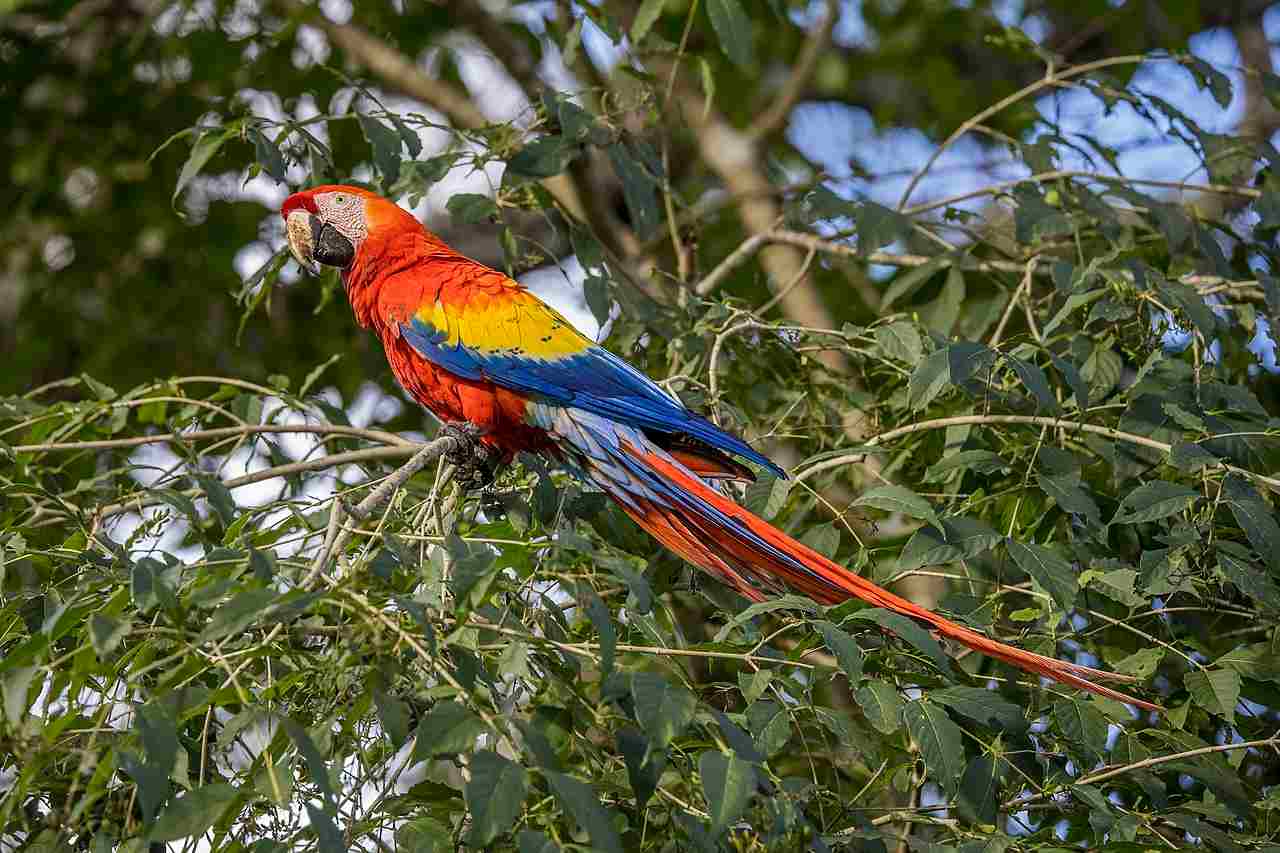
17. What do Parrots Do in Nature?
Parrots play a crucial role in the natural environment. They contribute to the pollination of flowers by transferring pollen from one flower to another as they feed on nectar. This helps in the reproduction of plants and the maintenance of plant diversity. Additionally, parrots are known to create nesting cavities in trees, which not only provide shelter for themselves but also for other bird species.
These cavities can be reused by other birds in subsequent years. Parrots also serve as prey for predators, such as raptors, which helps to maintain the balance of the food chain.
18. What Makes a Parrot Special?
One of the most notable aspects of parrots is their lifespan, as some parrot species can live for several decades. This longevity is a testament to their resilience and adaptability in various environments.
Another distinguishing feature of parrots is their vibrant coloration. From the striking blues and greens of the macaws to the vivid yellows and reds of the lorikeets, parrots are known for their stunning plumage. This colorful display not only adds to their beauty but also serves as a form of communication and attraction.
Parrots are highly social animals, forming strong bonds with their flock members. They engage in complex social behaviors, such as grooming, playing, and even sharing food. This social nature contributes to their intelligence and ability to learn and mimic human speech.
In addition to their individual characteristics, parrots play a crucial ecological role. As mentioned earlier, they contribute to pollination and seed dispersal, aiding in the reproduction and diversity of plant species. Their nesting cavities also provide shelter for other bird species, promoting biodiversity in their habitats.
